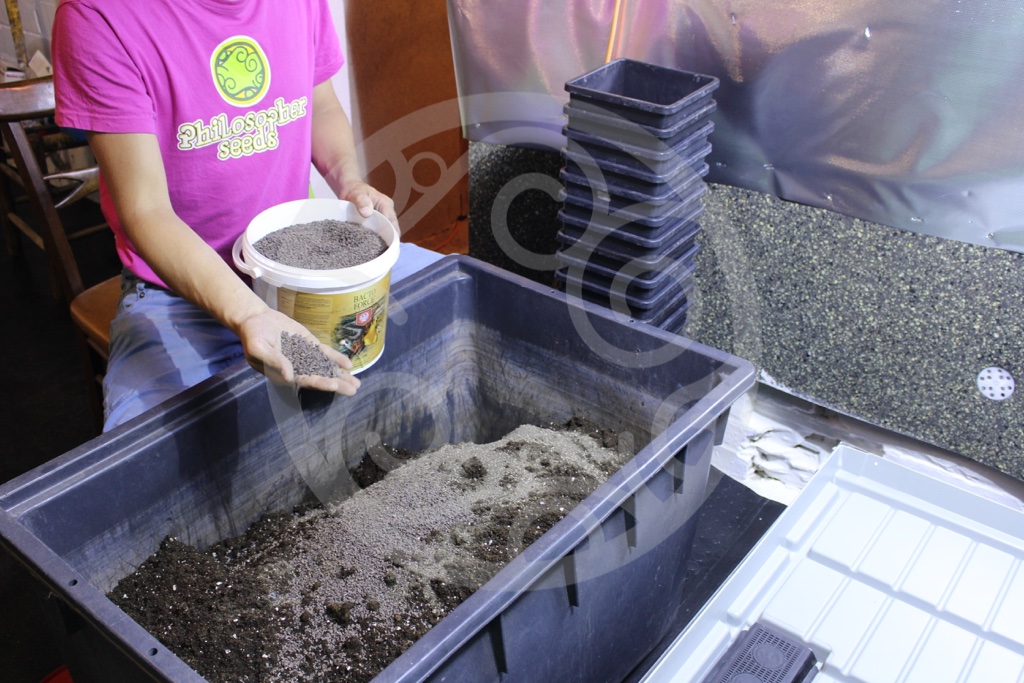Guerrilla growing cannabis
List of contents
Guerrilla growing cannabis
Guerrilla growing cannabis is a fairly common practice among those growers who don’t have any place of their own to cultivate, whether it’s an indoor grow, an outdoor garden or a balcony. In short, the idea is to find a suitable site in a nearby forest or scrubland where you’ll be able to safely grow a few plants and remain undetected. This can end up being a real challenge, given the numerous potential dangers we can face: Forestry patrols, hunters, hikers, wild mushroom collectors… they could all accidentally stumble upon your plants, something every grower wants to avoid at all costs.
In this article we’re going to explain everything you’ll need to consider when looking for the best spot to grow cannabis, as well as the best way to prepare the site so your plants are as well camouflaged as possible and can offer their maximum potential. We’ll also recommend the most suitable cannabis varieties and teach you a few tips and tricks to help you get the best out of your guerrilla grow, because, as every outdoor grower knows, the head stash supply for the whole year can depend on just one harvest, so there’s no room for errors!
With this in mind, security, discretion, weather conditions and genetics are just some of the aspects that we’ll be dealing with so that you can harvest the very best buds from your guerrilla grow... as if you cared for the plants in your own garden!
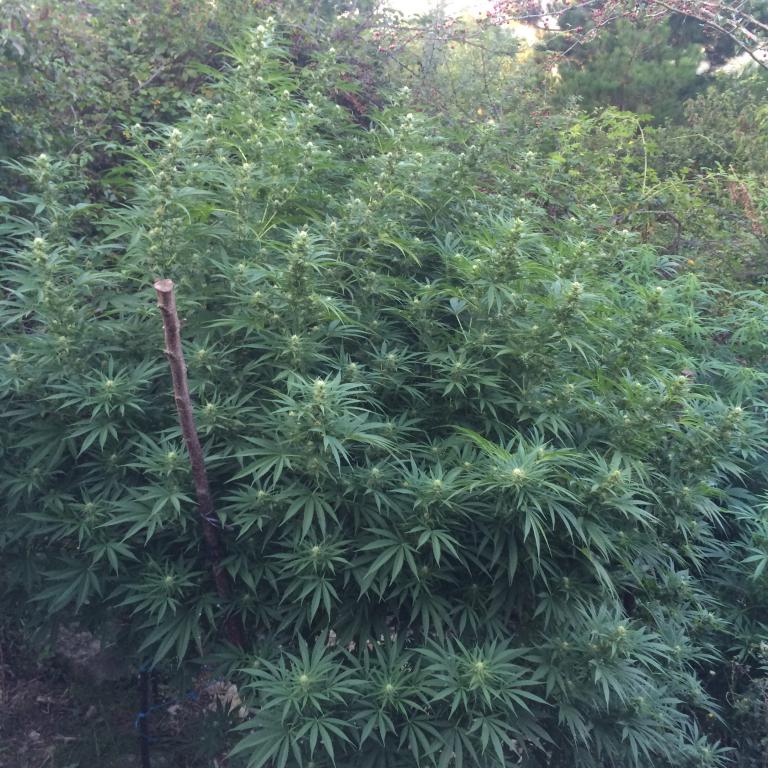
The ideal spot for guerrilla growing
There’s one thing that we must make very clear from the beginning: plants cultivated in guerrilla gardens are no different from any other outdoor grown cannabis plants and will have exactly the same basic requirements which the grower must satisfy. If the plants suffer any type of deficiency or disease (insufficient light, water, pest attack, mould, etc.) it will have a negative impact upon the quality as well as the quantity of the final harvest, so it’s vital to plan the grow well, especially if we don’t want to be making frequent visits to the site and drawing unnecessary attention to ourselves. We’ll be talking about the main aspects to take into account when planning the garden and choosing a location for it, making things easier for you and helping you get the best possible yields from your plants.
Daily hours of sunlight at the cannabis grow site
Whether we’re growing indoors or outside, the light our plants receive is a basic necessity that’s as vital as water itself. Cannabis plants love plenty of light, so the best sites will always be those blessed with the most daily hours of sunlight. Bear in mind that some plots will have plenty of exposure to sunlight during the spring but much less in late summer when the plants are flowering. We must consider the topography of the surrounding land in relation to the path of the sun through the seasons, as well as any nearby vegetation (trees, bushes, etc.) that could block out light.
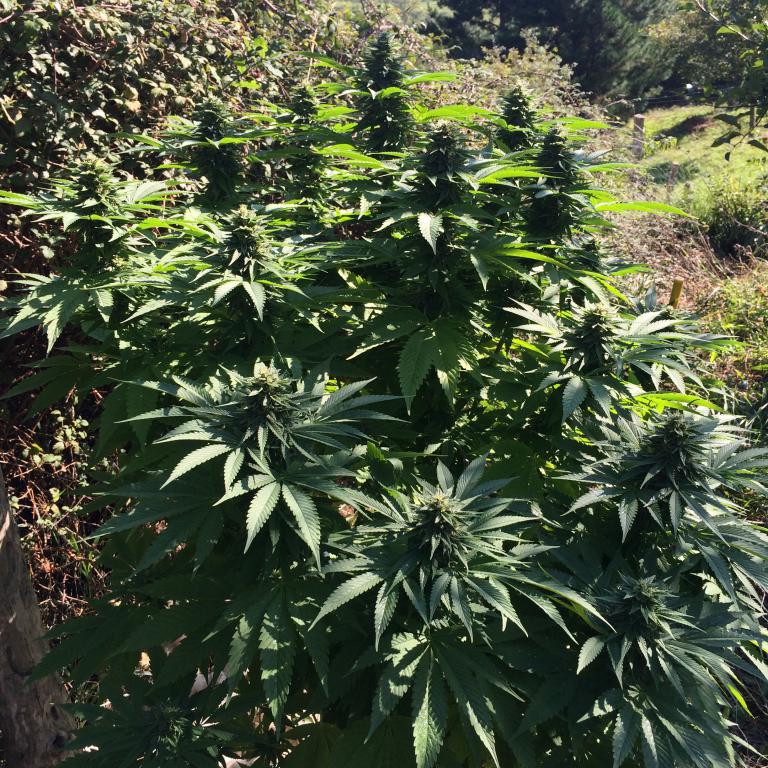
Just as with indoor cultivation, we must take great care to ensure good air circulation in the grow, with a current of air providing fresh air and removing stale, hot air, while remembering that strong winds can be a big problem in guerrilla gardens. As any outdoor grower knows, a strong gust of wind can easily snap stems and break branches, almost guaranteeing that the broken part of the plant will die. Another, no less important consideration, is that the wind can also do a great job of spreading the intense smell of your plants for quite some distance around the area and, obviously, the last thing we want is for anyone to be able to smell our grow site from nearby paths or farms! Try and have this in mind and study the area surrounding your plot to make sure the smell won’t reach anywhere it can cause problems. A small clearing amongst brambles and bushes is normally a good choice, as the vegetation acts as a screen, shielding your plants from powerful air currents.
How to choose your guerrilla grow plot
As we have already mentioned, it’s logical to choose a site that’s out of sight of roads or houses. That’s not all though, if possible, it should also be far enough away from them that the smell will not reach them either. Also remember that in certain areas, just at the time when your plants are laden with flowers and giving off an intense smell, the mushroom-hunting season begins, and the hills are filled with avid mycologists who may come across your garden by accident. We must also watch out for hunters, who can make their way into even the most isolated parts of the forests, well away from roads and tracks.
Some growers will select several different spots and leave a few plants in each, in this way they can be sure of harvesting something, even in the unfortunate event of one of the plots being found. It’s not a bad idea in itself, but not only will spreading out the plants also increase the chance of being discovered while cultivating, it will mean a lot of extra work too, it’s one thing finding and preparing a good site, but doing it for several is another thing altogether!
Insect and animal pests in the guerrilla grow
Forest fauna can present serious problems in a guerrilla grow. We must have a pest prevention program to avoid snail and slug damage, as well as the typical insects that can attack outdoor cannabis, such as aphids or scale bugs. For snails, scattering crushed egg shell around the stem works perfectly, the snails don’t like to pass over the sharp fragments and will not approach the plants. There are many natural insecticides and preventive measures available on the market effective against other types of insects such as those mentioned.
Another precaution we recommend is to keep away from any natural tracks created by the passage of larger animals... it’s never a good idea to put plants in the path of a family of wild boars or deer! Finally, stay well clear from fields or other areas with obvious molehills as you would your worst enemy, they can quickly destroy the roots of your plantation as they dig for worms and grubs and their tunnels are used by field voles which eat the roots directly. Lastly, remember that most wild animals will avoid places where they can detect the presence of people, so we can "mark" the territory around the perimeter of the grow plot with human urine, so the smell will help to keep them away!
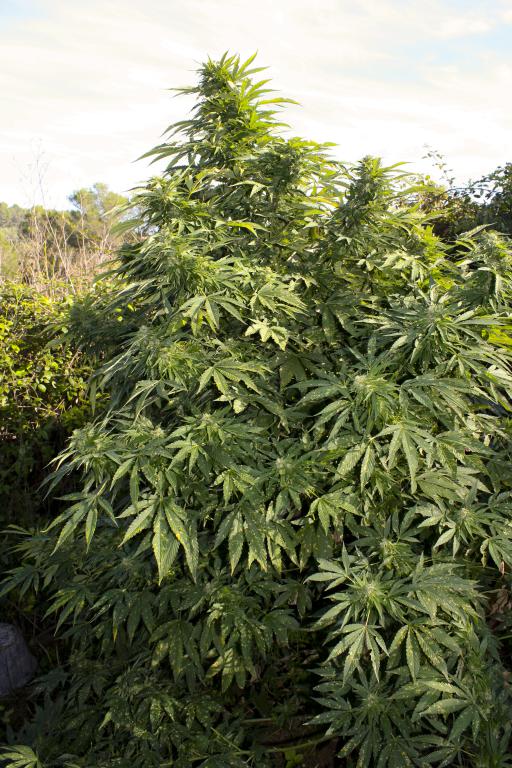
Irrigating guerrilla grown cannabis plants
Finding a good place to grow that meets the above conditions and also has a source of water nearby is almost a guarantee of success! Without a doubt, once the right place has been found regarding light, safety and discretion, the big question is always the same... where de we get the water for the plants? Having a water source nearby means you won’t be forced to carry heavy water bottles long distances through the woods, which is not only hard work in the heat of summer, but also increases the chance of our being observed. Depending on the terrain and the limits of your ingenuity, you can even create a passive drip-irrigation system from a nearby stream to your plants.
Don’t forget that places with easy access to water, such as lakes, rivers, etc. are frequently visited not only by wild animals but also by people, because we all like to cool off in summer! Try not to visit the water source in broad daylight, when it’s more likely you may bump into a family (or several) enjoying a day out in the country. If you plant very close to a river or pond, look carefully at the paths made by animals as they go to drink and avoid putting plants in their way.
There are many ways to make a passive drip irrigation system using small water tanks or, as already mentioned, nearby water sources such as streams or ponds. As we’ll discuss later on, the use of polymer gels is almost obligatory for every guerrilla grower, allowing much longer periods between irrigations than without them. Digging a little around the stem will allow water to accumulate where it is of most use when irrigating or in case of rain, in particular when we’re growing on a slope... We don't want the precious rain or irrigation water to drain away downhill!
Preparing the guerrilla garden
So now you've found the perfect place for your garden? Congratulations, it's not an easy task! Next, let’s look at the prlanning of your outdoor cannabis grow. The first thing, of course, will be to adapt the chosen area to our needs; we can dig holes and fill them with good quality soil and polymers, remove weeds, cover any possible access points to the garden with branches or brambles, etc. We’ll show you how to deal with at all these aspects and get everything under control before starting cultivation:
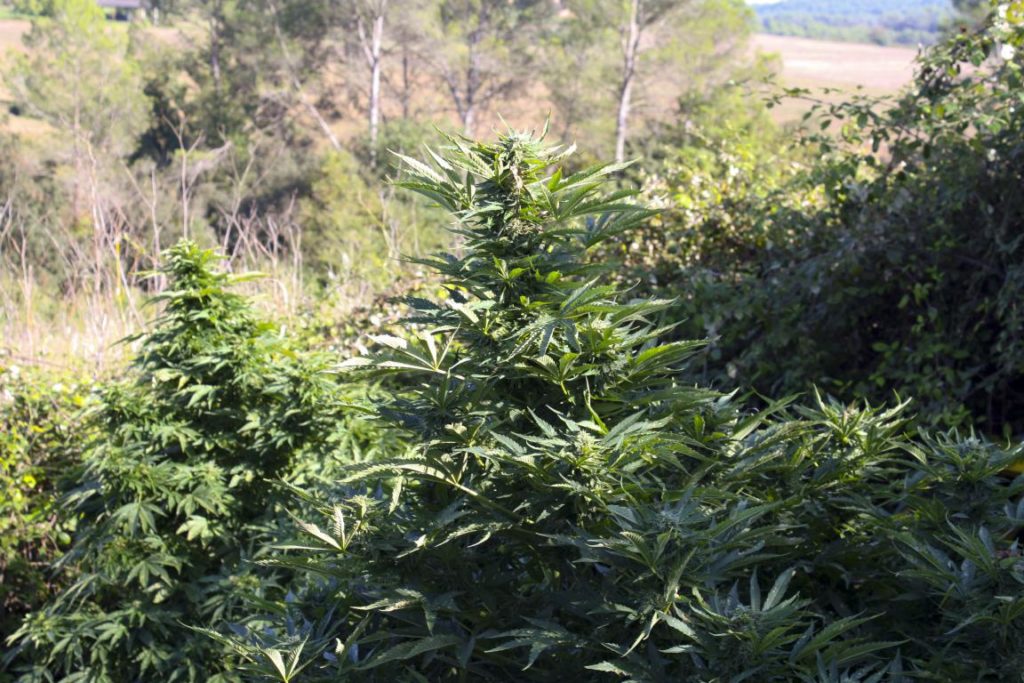
How to camouflage the grow
Sometimes we may have found a place that meets all the necessary conditions, except that, for example, it can be seen from a road or house, or that simply needs a little extra work camouflaging it. Don’t get scared now: with some gardening gloves and pruning shears we can create a space surrounded by branches, bushes and brambles that will hide the plants from sight. It is also a good idea to close off small tracks, narrow paths and other possible access points leading to the garden that can easily be "blocked", making it really difficult to access the area where the plants are.
Some growers will fix fake plastic flowers to the branches of plants with wire; a trick that probably wouldn’t fool anybody up close, but one that can completely change their appearance if they are seen from a distance. We also recommend you don’t follow a regular pattern when planting, because neat rows of perfectly spaced plants, with a different shade of green than the other plants that surround them, will stick out like a sore thumb!
Substrates and slow-release fertilisers
As you already know, growing cannabis in good soil greatly facilitates things when it comes to reaping as abundant and aromatic a harvest as is possible. We recommend buying a high quality substrate for cannabis in your usual grow shop, paying close attention to the nutrient content and to how long the plants can go before feeding. In the following link you can see how to make a quality organic soil mix, step by step:
How to prepare a good organic substrate for cannabis
In this Post we will do a brief introduction in the organic-ecologic growing of marijuana. You can easily acquire the necessary knowledge to perform successfully a 100% ECO crop. The traits of taste and aroma increase potentially with these methods, and we also can take advantage of all the organic matter which ourselves produce.
Whichever soil we choose, it should contain enough nutrients to avoid us having to fertilise the plants too frequently, resulting in constant visits to the garden. For this reason, it’s always best to start with a good quality cannabis substrate and add some slow-release fertilisers, such as those suggested by the post in the previous link (earthworm humus, bat guano, blood or bone meal, etc). This is an excellent way to ensure rich and constant nutrition over long periods of time.
Adding microbial life to the soil also ensures a healthy and strong root system protected from pathogenic fungi such as fusarium or pythium, which are feared by all growers due to the high death rate of infected plants. In addition, we also make sure that the plants are taking full advantage of the nutrients and, therefore, that we are getting the most out of them.
Polymer gel in guerrilla cannabis growing
Polymers are macromolecules composed of several monomers (potassium poly-acrylate compounds are the most commonly used for this purpose). Its use in agriculture, dating back to the 1950s, allows growers to save large amounts of water in addition to reducing the frequency of irrigation, music to the ears of all guerrilla growers! Thanks to their physical properties, they can absorb between 200 and 400 times their dry volume in water, turning them into true mini-reservoirs for plants.
The polymers are usually used mixed with the substrate as if they were just another component of the soil mix. After irrigating, the polymers swell and stay hydrated for long periods of time, so the plants have much more water in the same volume of substrate than without them. And the best thing is that, once dry, we can rehydrate them, loading them with water again! In recent years polymers have become an indispensable tool for any guerrilla gardener, as well as helping to achieve healthier plants and better crops, they save the grower a great deal of work.
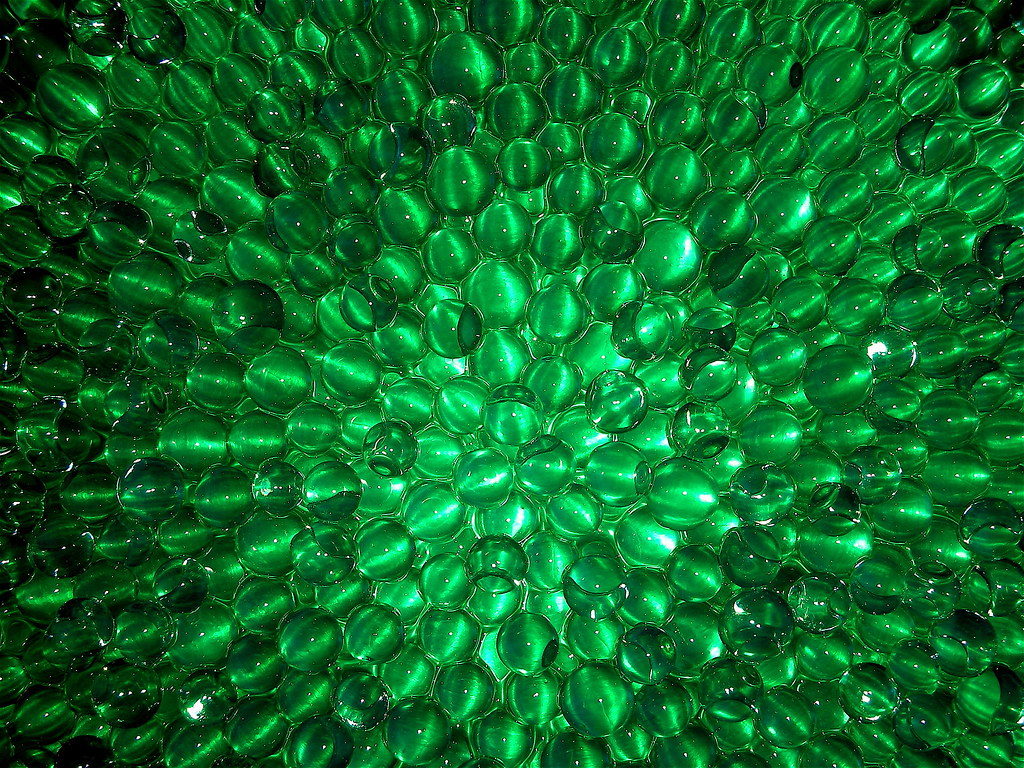
Another water-saving technique is one commonly used in crops that rely solely on rainfall. A sheet of plastic, say 1 square metre in size, is buried about 10 cm deep, with a hole in the center, where a plant is placed. Then, small holes are perforated all over the plastic and it is covered with dirt, completely hiding it. Thanks to this system, when irrigating, water can pass through the holes we have made in the plastic and hydrate the substrate well. However, since a large part of the substrate is covered by plastic, it will be much more difficult for it to evaporate due to the environmental heat, offering a more efficient use of irrigation water. Of course, this technique can be combined with mulching, covering the soil beneath the plant with straw or dried vegetation.
Cannabis varieties for guerrilla growing
We’ve almost got everything ready, now we just need to select the cannabis variety we’re going to cultivate and we can start! The advent of autoflowering varieties sparked a revolution in the cannabis sector, especially for guerrilla growers. The fact that the plants bloom independently of the photoperiod allows the grower to carry out several harvests a year, staggering the planting so that he can chop new plants every few weeks. With some patience and a calendar you can make a great crop plan and fill your garden from March to late October.
When it comes to photo-dependent varieties, we can’t go any further without mentioning one of the true queens of outdoor and guerrilla gardens, our classic Early Maroc! Thanks to some special characteristics, especially its very fast flowering, it can usually be harvested during the second half of August, before the autumn rains. And if you want an equally fast plant with superior resin production and potency, you should definitely try Early Gorilla, our cross between Early Maroc and the famed Gorilla Glue #4 (GG #4).
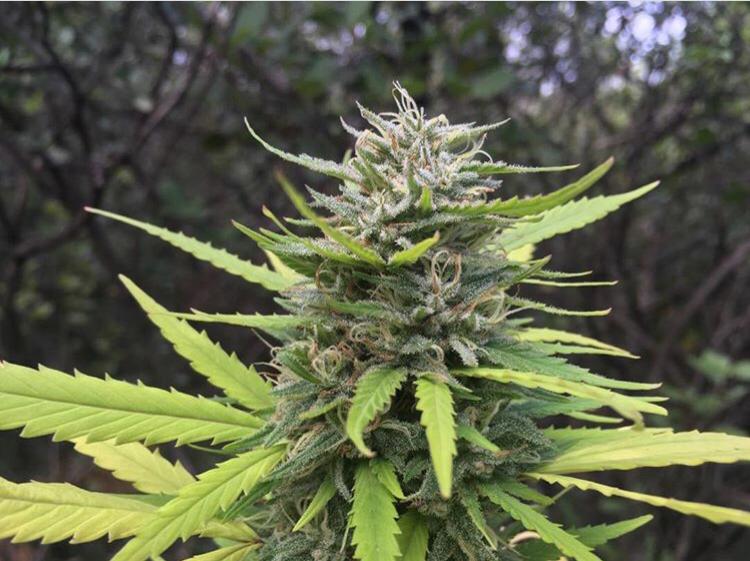
In general, when choosing varieties for guerrilla cultivation, it is important that they are fast-flowering and resistant to fungi and pests, as this will save us many headaches and hugely increase the chances of a successful harvest. As many of you will know, it can be incredibly frustrating to nurture the plants for months only to find them full of botrytis or powdery mildew on harvest day!
So, at this point we’ve found a good place to grow and we have prepared the ground well, with the substrate ready and the garden well camouflaged. Now all we need to do is to plant and visit from time to time (the frequency will depend on you, how close by you are, etc), and hopefully in a few months we will be enjoying our fragrant flowers!
Tips for guerrilla growers
We recommend, whenever possible, to germinate the cannabis seeds at home in the normal way. Ideally we would keep the plant safely at home until it reaches 15-20cm tall, when we transplant it to its final spot in the guerrilla garden. Small seedlings are delicate, and it is highly likely that some will not survive if planted directly at the guerrilla site. Therefore, growers usually germinate seeds first at home in a small pot that can be easily transported to the guerrilla plot in a backpack.
If we’re starting some autoflowering seeds, then things get a little more complicated, because they hate small pots and after just 10-15 days growing in one, they can start to flower at a ridiculously small size. In this case the best thing would be to start them off at home and bring the germinated seeds to the guerrilla, where they will be planted in their final location. In case of using clones, remember that it is not advisable to move them outside before June 1 (Northern hemisphere), otherwise they could start to flower (this article on intensive outdoor cultivation will shed more light on the issue and also show you how to get several outdoor harvests a year from clones).
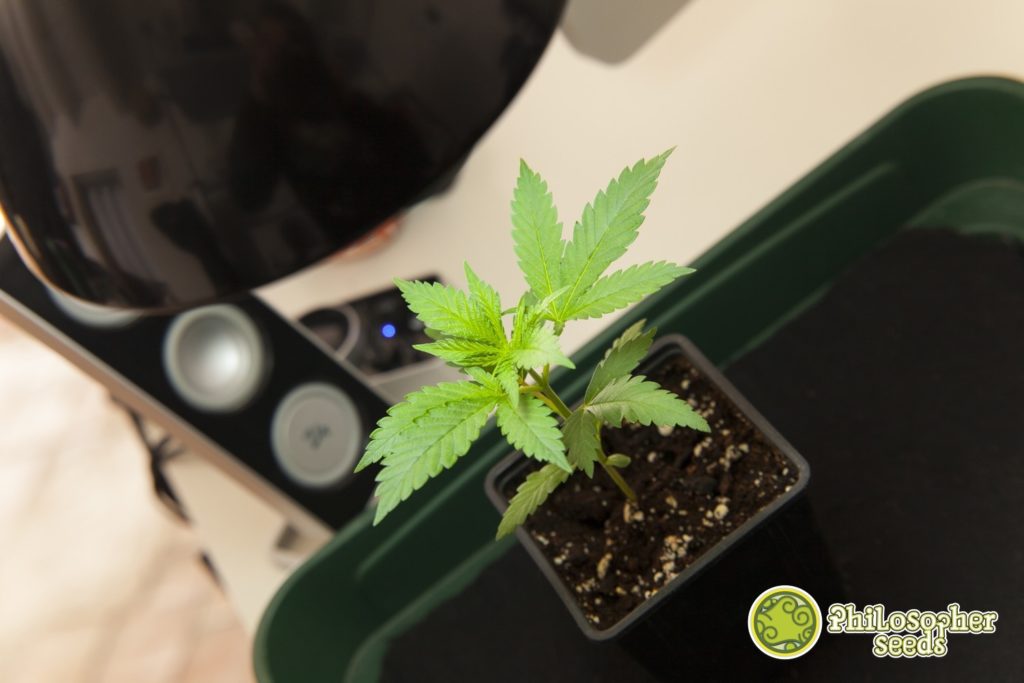
To protect the tender buds of the small plants from browsing animals like rabbits or deer, some expert growers make a tube out of chicken wire or similar mesh (others use 8 litre water bottles with both ends cut off) to cover the plants vertically. In addition, as we will see below, if the mesh is buried in the soil a bit and firmly fixed, it can be used as a support to tie the branches of the plant as they grow, following the LST technique.
Controlling the plants’ height (SCROG, LST)
In guerrilla cultivation we don’t want monstrous plants, several meters tall, quite the contrary! We must ensure our garden won’t attract attention and will remain hidden among the bushes, so techniques such as LST (Low Stress Training) work very well. Basically, the growth of the branches is guided by tying them down, to the base of the pot, to stones, etc. so that the plant never exceeds a certain height. In addition, this technique improves the plants’ exposure to sunlight, maximising production!
LST is a variation of the classic SCROG technique, but without the need to use a net or frame to guide lateral growth, which makes things a lot easier for the guerrilla grower. Of course, to help ourselves out, we won’t choose to grow pure Sativa varieties that can reach several meters in height and that also take months to flower; Almost any other type of cannabis plant is preferable in this case.
Pruning our plants
If we deem it necessary we can choose to prune the plants, perhaps in combination with some of the techniques we’ve just seen. If, in a normal grow, we usually prune the lower parts of the plants, in guerrilla growing it’s almost obligatory to do it. This is because, for one thing, these parts usually get fairly dirty from mud, leaves, etc. On the other hand, they also divert vegetative vigour from the upper part of the plants, which is where the best buds are produced and therefore the area we want to focus development. Finally, by pruning the lower part of the plant we will improve air flow and reduce the chances of pests and diseases. In our article on pruning techniques you’ll find more information and tips to prune correctly.
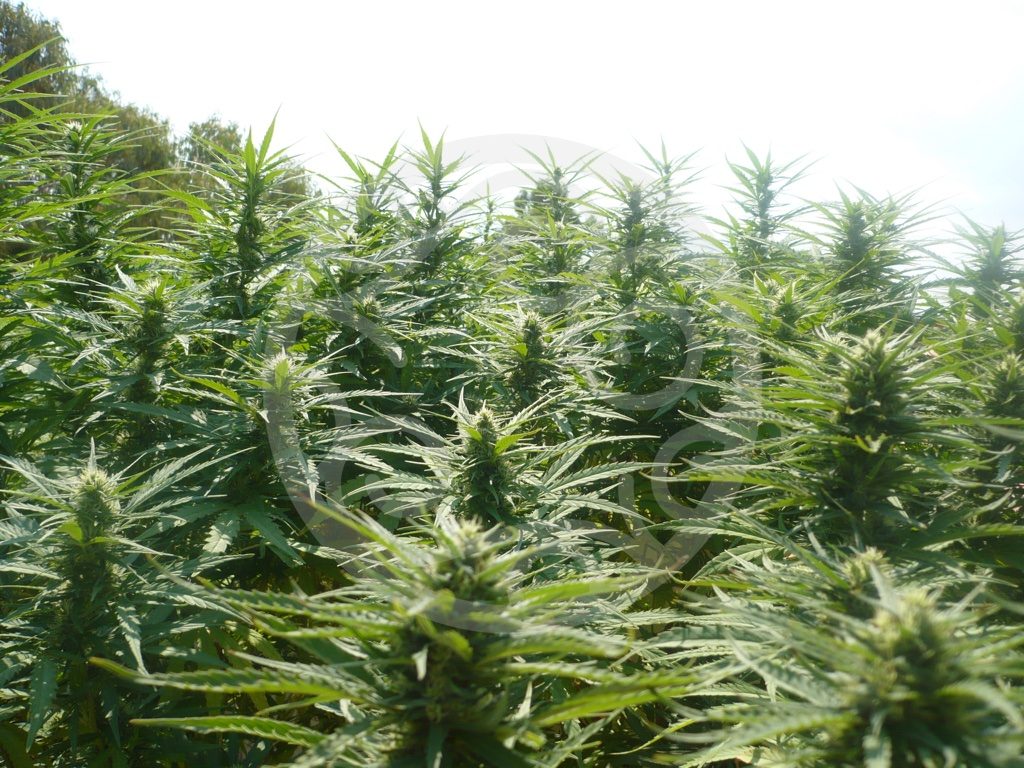
Nutrition
The nutrition for a guerrilla grow should be the same as for any cannabis plant: rich in nitrogen and phosphorus during the growth period; rich in phosphorus and potassium during flowering. As we’ve already mentioned, it’s best to opt for solid organic amendments to be mixed with the substrate before planting. Using bottled fertilisers may be very comfortable when growing at home, but having to carry liquid fertilisers or nutrient solution bottles to the guerrilla garden is hard work. In addition, it increases the risk of discovery by obliging us to visit the grow more frequently in order to feed our plants, something we can avoid if we make sure the substrate is enriched with slow-release fertilisers.
Irrigation
As many of you will already know, the water requirements of a small cannabis plant are nothing like those of the same plant fully grown, when it will need a much larger volume of water each day. It is vital to gradually increase the amount and/or frequency of irrigation, depending on the growth rate and condition of the plant, to avoid wilting and death due to lack of water, as well as root damage due to excessive irrigation. Again, don’t forget that there are useful products such as polymers that allow you to irrigate less often, reducing risks by not having to visit the crop too often... or alternatively, you could perform a rain dance or cross your fingers and just hope for a wet summer!
Harvesting guerrilla cannabis plants
If you’ve made it this far (and we certainly hope so!) you’re now facing the last headache before you can enjoy your well-deserved flowers. Without a doubt, once the buds are harvested we recommend the use of a small portable vacuum packing machine for storage, they are easy to find in plenty of grow shops. With this small device and a few suitable bags, you can transport the fresh buds without their intense smell getting you in trouble on the way to the drying room. There are also anti-odour bags and backpacks that work wonders, although they are a more expensive option. We’ll leave you with a link to our article on how to dry and cure cannabis, which at this point is the final phase left to be completed!
We hope we’ve helped you to plan your guerrilla grow and to get the most from it, don’t hesitate to leave us any questions or comments you may have.
Happy growing!
